11/24/2023
7 common used car problems you should be aware of
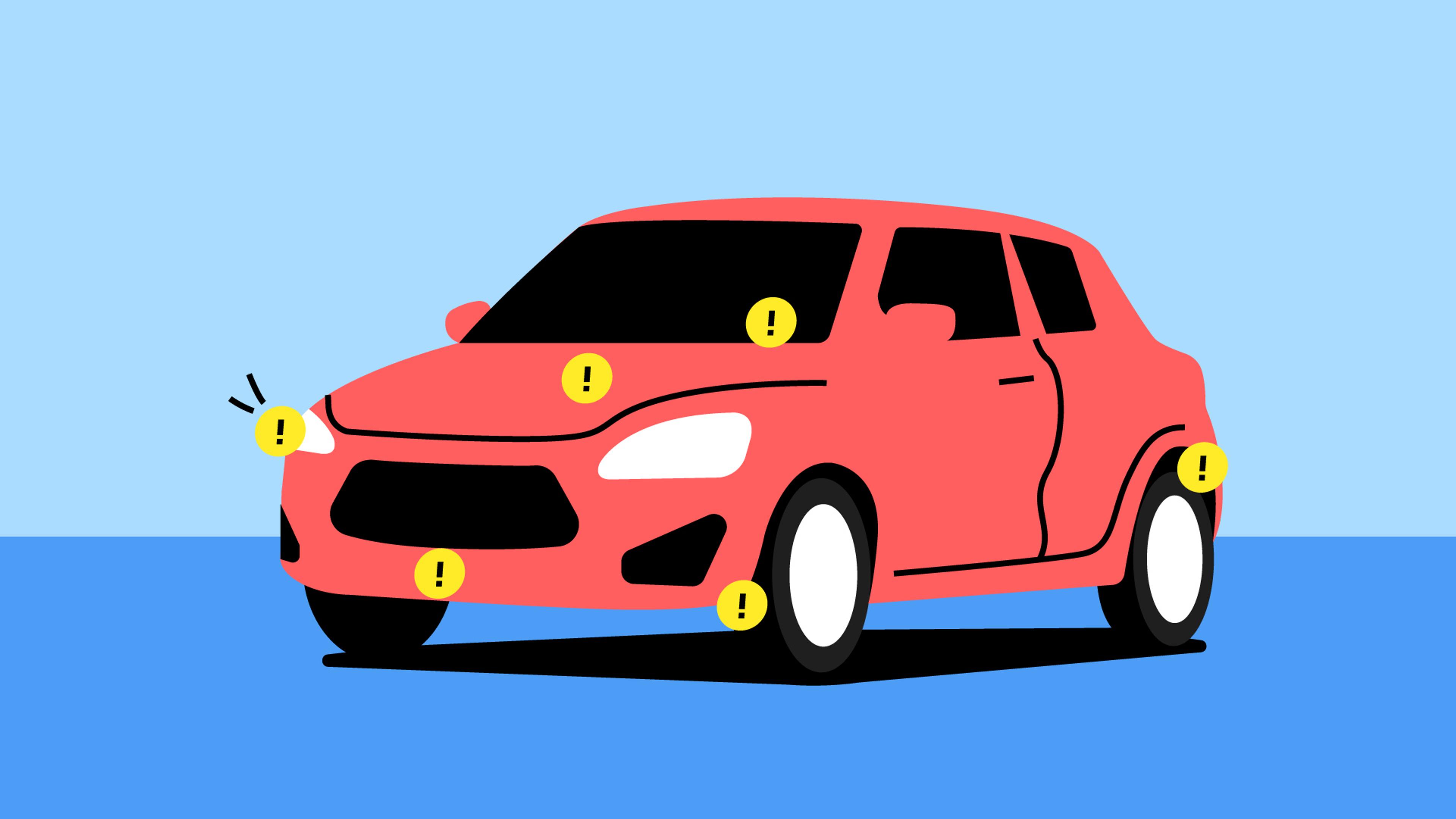
You rarely know what to expect when buying a used car. They all come with a history, and you’re just bound to discover a few quirks along the way – a mysterious dashboard light or a slightly offbeat engine hum that could double as a playlist.
Therefore, arming yourself with knowledge is vital in the used car buying process.
In this article, you’ll learn about some common used car problems, things that often lie beneath the surface, and how you can avoid purchasing a vehicle that will take you on an adventure you’ve never signed up for.

Used cars have dark secrets
Reveal them all! Just enter a VIN code and click the button:
1. Car engine overheating
Among the biggest used car problems, the engine overheating is a frequent and troublesome issue. It happens when the engine’s temperature rises beyond its normal operating range, potentially harming various engine components and even resulting in engine failure.
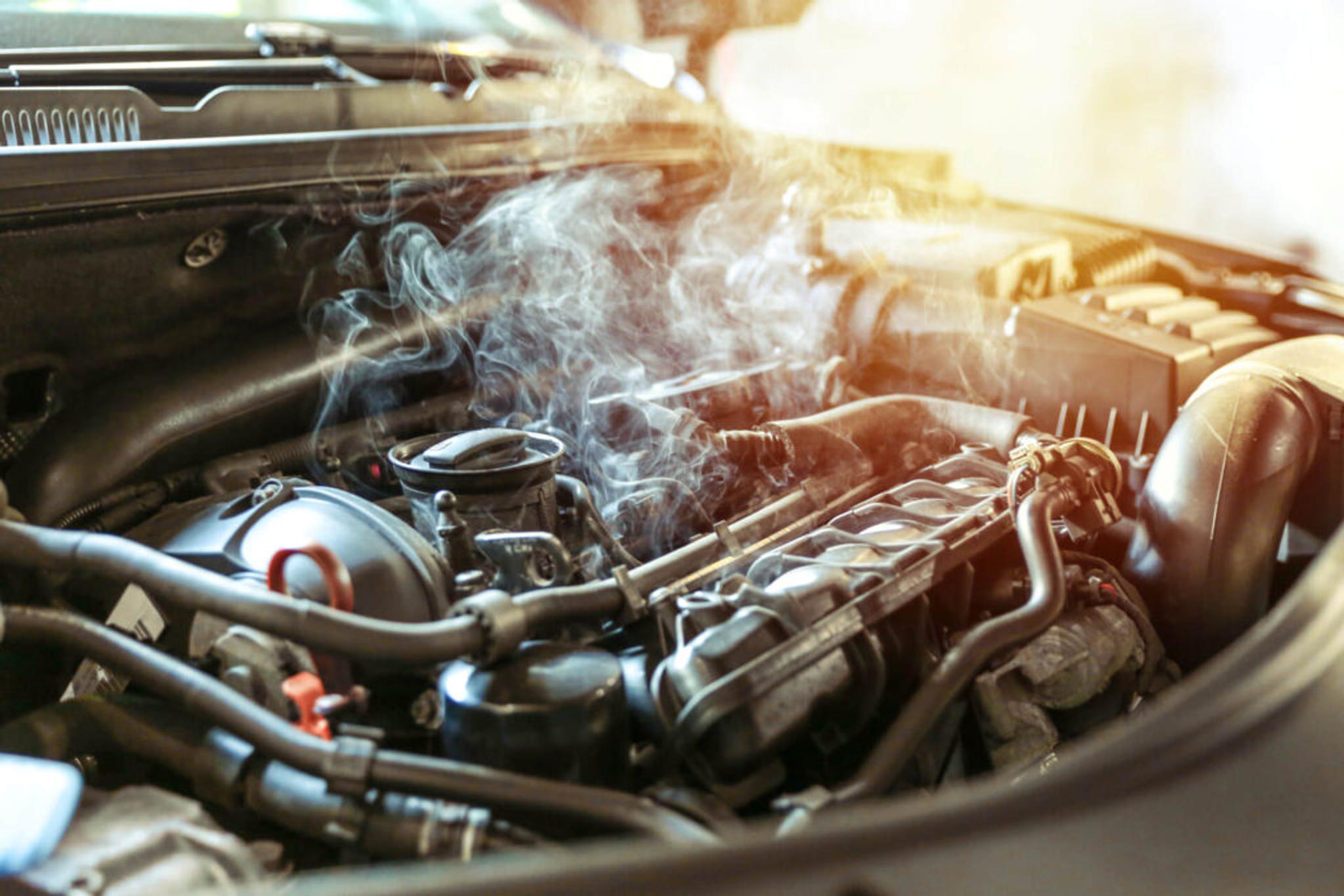
There can be many reasons why your car’s engine is overheating. Low coolant levels, a stuck thermostat, or a worn-out water pump can all throw a wrench in the works.
Fortunately, checking if the engine is overheating before purchasing a used vehicle is not that difficult. The easiest way to do this is to take a longer test drive, observing the temperature changes and potential overheating symptoms.
Regardless of the cause, an overheating engine isn’t something you want to leave unattended, as engine repairs or replacement can be very expensive.
Signs of engine overheating
The relatively good news is that you’ll be able to see clear signs if your used car starts to experience engine overheating. Typically, it includes the following:
- A rising temperature gauge or a dashboard warning light is one of the most obvious signs of the engine going beyond its operating temperature.
- Steam or smoke coming from the hood.
- Hot hood that you can barely touch.
- Unusual smells that overheating engine emits, often resembling a sweet or chemical-like smell.
- Strange ticking sounds indicate that the lubrication process between the moving parts of the engine has failed.
- Reduced engine power prevents your car from keeping up with the traffic.
- Coolant under your parked vehicle may also indicate an engine overheating.
If you notice any of these signs while driving, safely pull over and shut off the engine. By doing so, you can prevent potential damage (that can even lead to fire) and start addressing the issue immediately.
2. Transmission malfunction
Whether the car transmission is automatic or manual, its malfunction is another common issue used car owners face.
Depending on the transmission type, a malfunction can appear differently. For example, an automatic transmission may slip, while difficulty switching gears is a typical manual transmission issue. The latter symptom may also be caused by a dragging clutch, making it challenging or even impossible to change gears.
Needless to say, transmission malfunctions require your immediate attention – they’re expensive to fix and may cause safety issues.
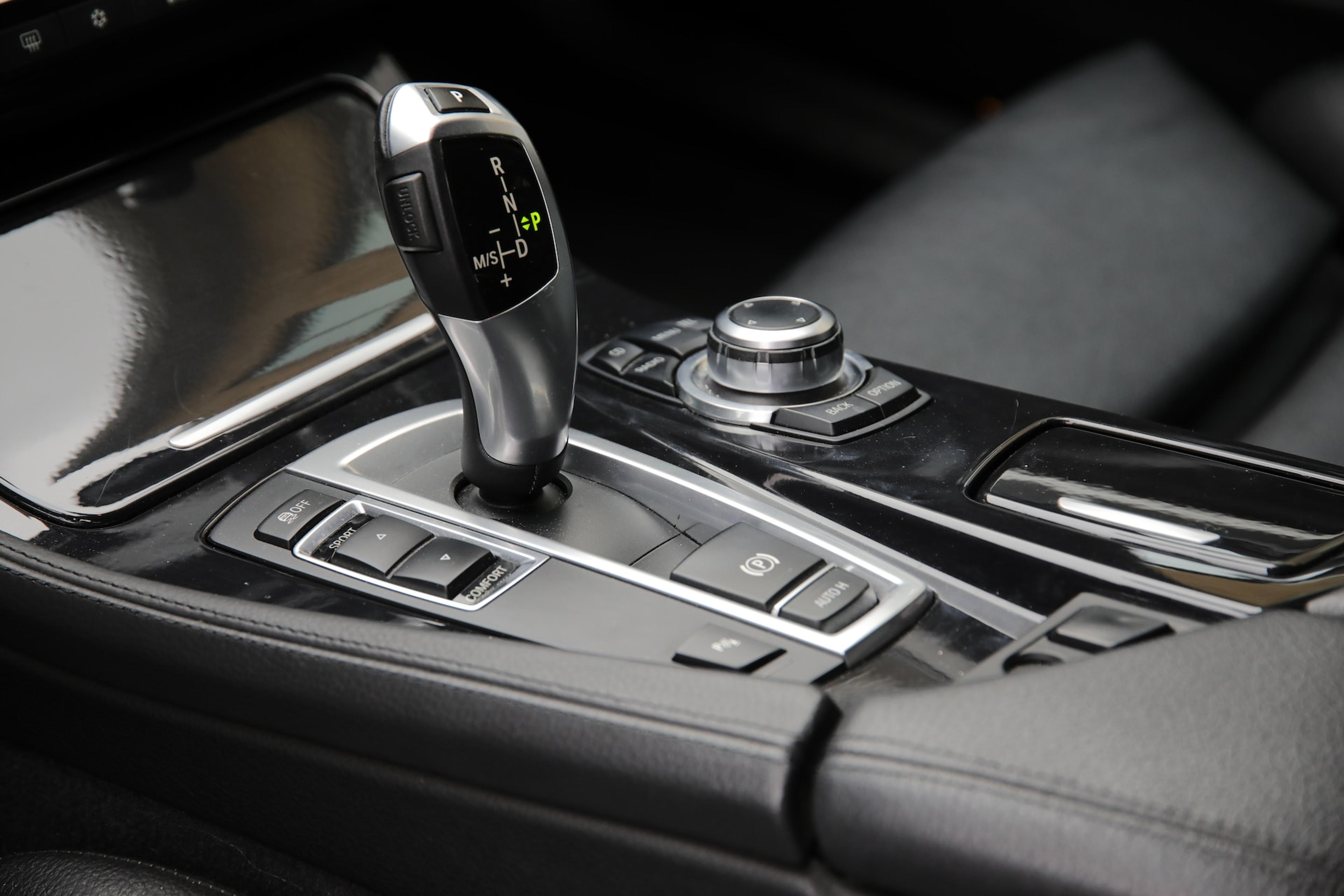
What are the most common transmission failure symptoms?
Besides transmission slipping and difficulty shifting gears, here are some other warning signs that your vehicle may need transmission repair:
- Unusual sounds. Although strange sounds can indicate many different problems, a failing transmission is one of them. Usually, defective automatic transmissions will give you whining, clunking, and humming sounds, while manual transmissions give loud, often sudden mechanical sounds.
- Fluid leaks. Since the transmission system relies on the balance of fluid pressure and lubrication, leaking transmission fluid is a clear indication of a potential transmission failure.
- A burning smell can indicate that the transition is overheating or the fluid is burning.
- Grinding or shaking. If your car experiences any grinding or shaking while changing gears or pressing the gas pedal, it’s likely also related to transmission issues.
- Car surging or sudden deceleration. A malfunctioning transmission can result in your car either accelerating or decelerating, even when maintaining a steady pressure on the accelerator.
- Delayed gear shifting. Shifting into the proper gear should be easy with a functioning transmission. Hesitation or delayed shifting is your first hint that something’s gone wrong.
- Check engine light. While the primary purpose of the check engine light is to alert you about potential problems with the engine and its associated systems, it is connected to the vehicle’s onboard diagnostic system, which monitors various components and systems, including the transmission.
3. Worn-out brake pads or rotors
The braking system consists of many closely connected moving parts and is crucial for the safe operation of any vehicle. Naturally, its various components can wear out over time, trickling down other elements.
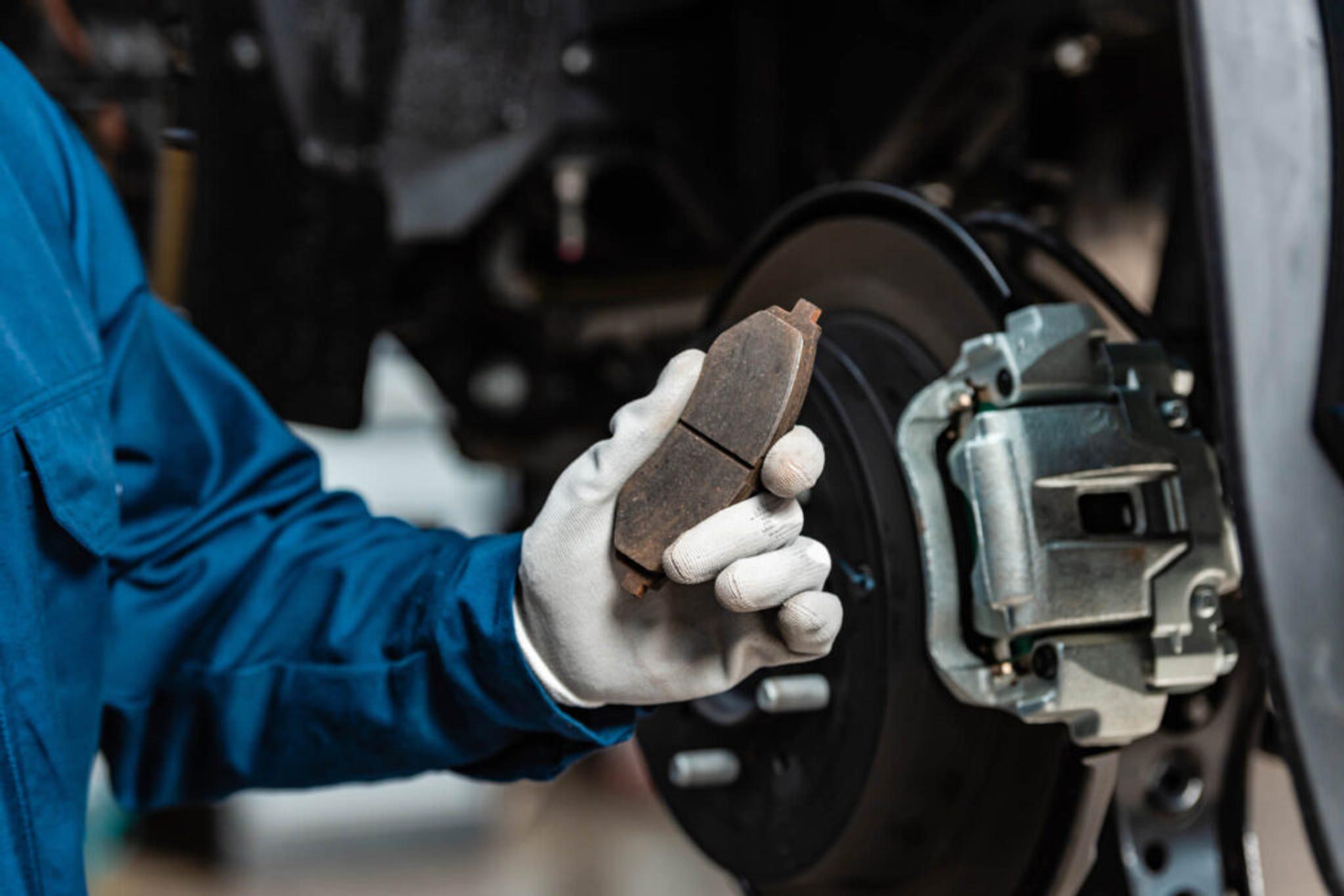
Since brake pads and rotors experience constant friction and heat during braking, they often become the center of attention when it comes to brake system problems in used cars.
How fast they wear out or how often you should replace them depends on various factors, including driving conditions and style. It’s recommended to replace brake pads every 25,000 to 65,000 miles, while you should change your brake rotors anytime between 30,000 to 70,000 miles.
How to tell that it’s time to replace your brake pads or rotors?
When it comes to brake pads, you can notice if they’re worn out just by looking at them. Of course, a professional mechanic can tell you more than meets the eye (since you can’t see the inner brake pad without taking the wheel off), but to get a basic idea of the situation, you can check the outer brake pad yourself if your car’s wheels have open design.
As for the rotors, one of the most common indications of wear is the vibration of the steering wheel while braking. If the rotors aren’t smooth anymore, the brakes may work unevenly, leading to slight car shaking.
4. Worn-out shock absorbers and struts
A vehicle’s suspension system is responsible for maintaining a comfortable and controlled ride, therefore, any little suspension issue can impact your driving experience and safety on the road. If you feel that road irregularities have become significantly more noticeable lately, the problem is likely your car’s shock absorbers and struts.
Over time, shock absorbers and struts can wear out due to various factors, including mileage, road conditions, heavy loads, driving style, or environmental factors. All of these leave their mark over time, and that’s why suspension issues are a more common problem in used cars.
Signs of worn shock absorbers and struts
- Increased bouncing. If your vehicle bounces more than usual after hitting a bump or a dip in the road, it can indicate that the shock absorbers or struts are no longer working effectively.
- Poor handling. Your vehicle might become more difficult to control, especially during cornering or sudden maneuvers.
- “Nose diving” or squatting. If your vehicle has suspension issues, during acceleration or braking you can notice the rear end squatting or the car dipping excessively (nose diving).
- Clunking, knocking, or rattling noises coming from the suspension area can suggest the components are loose or damaged.
- Uneven tire wear. Since a car with suspension problems typically is unstable on the road, it often results in uneven tire wear.
5. Battery failure
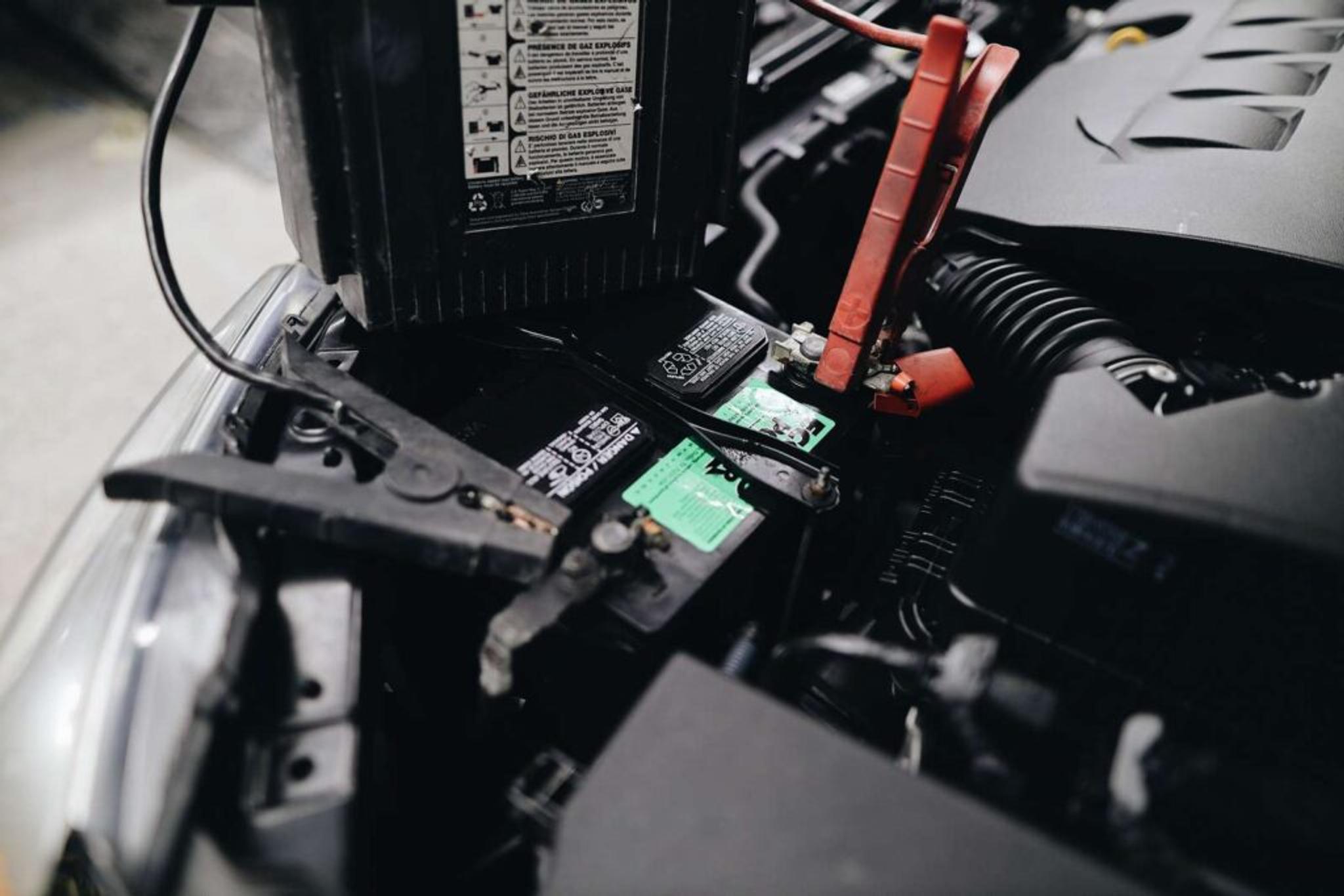
Battery failure is another common issue in used cars, therefore, it’s recommended to ask about the age of a battery when buying a car. In modern vehicles, battery failure will often be accompanied by the dashboard battery light.
Here are several factors that can cause battery failure in used cars:
- Battery’s age. Under ideal conditions, the car’s battery often lasts up to five or six years, therefore, it’s important to consider the battery age if you’re planning to buy a used car.
- Maintenance. Regular battery maintenance, such as cleaning terminals and ensuring proper connections, can help prolong its life.
- Extreme temperatures. In areas with severe weather conditions (extremely hot or cold), batteries might fail sooner in cars that haven’t been well maintained.
- Inactivity. If you’re not using your car that much, the battery can lose its charge and sulfate can build up on the plates, reducing its capacity.
- Electrical issues. The battery might not be charging properly if the car has electrical problems, thus leading to its premature failure.
Whatever the case, if you experience battery problems with a used car, have it tested or, if necessary, replaced by a reliable mechanic to avoid unexpected breakdowns.
6. Blocked catalytic converter
Modern vehicles are incomplete without catalytic converters that filter out harmful pollutants and toxic gases produced by cars. It’s an obligatory component of the car’s exhaust system that’s also expensive to replace if anything goes wrong – and sometimes it does.
Most cars perform a DPF regeneration once in a while, during which the trapped particulates heat up enough to combust and turn to ash, cleaning the catalytic converter and the diesel particulate filter. However, this function often fails, resulting in a clogged catalytic converter or DPF.
If your car’s catalytic converter is blocked or restricted, toxic gas trapped in the engine can heat up to the point of ignition. This can negatively affect the vehicle’s performance, emissions, and overall operation, and damage crucial engine components over time.
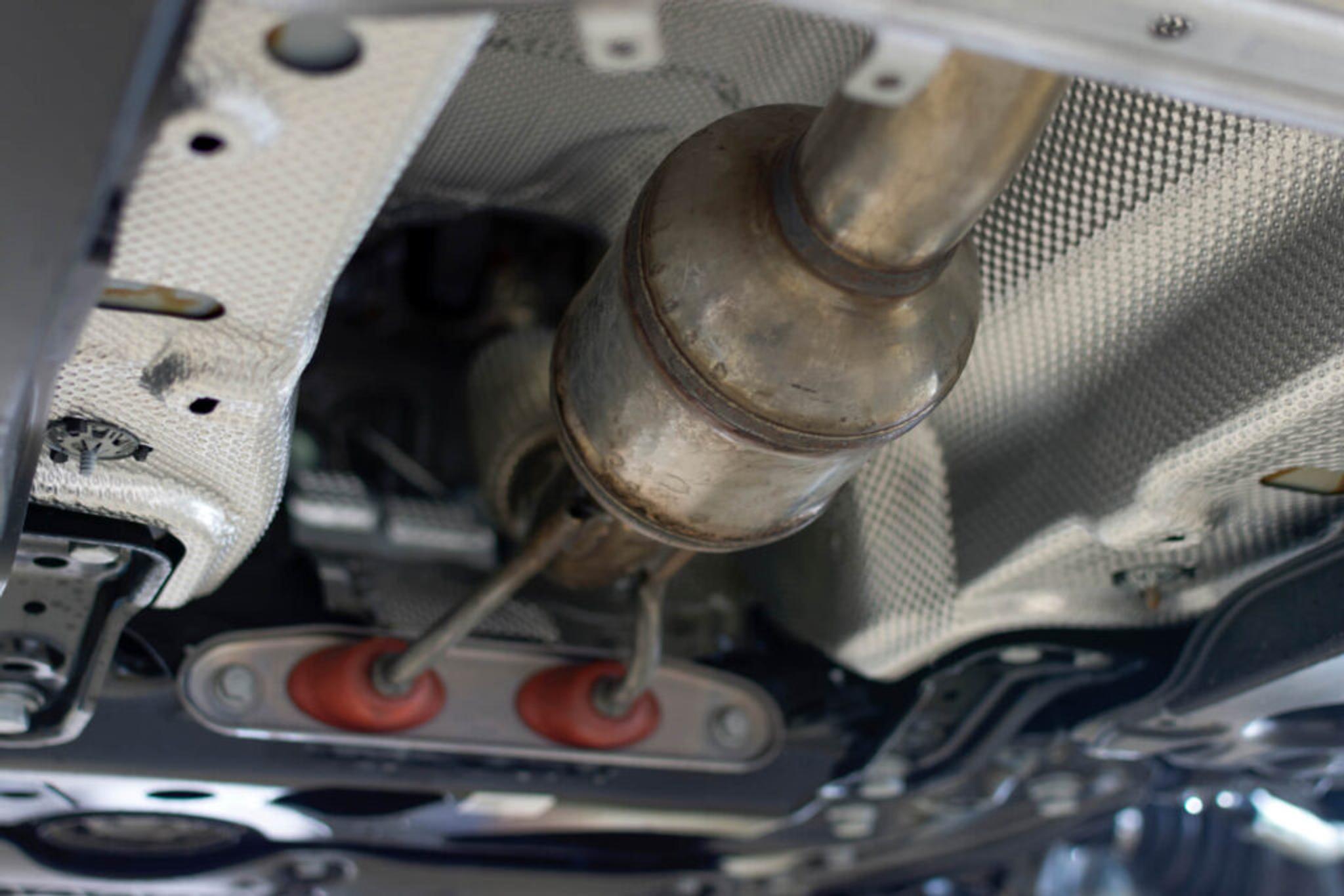
How to know if your catalytic converter is blocked?
Trouble starting the car is usually one of the first signs of a blocked catalytic converter. Another related issue is reduced engine performance, as the harmful gases get stuck in the combustion chamber, leading to decreased acceleration and increased engine lag.
Regardless of the symptom, a blocked catalytic converter can trigger the vehicle’s on-board diagnostics system, causing the “Check engine” or another warning light to illuminate on the dashboard. So, if you suspect that the catalytic converter might be the cause for it, you can use an OBD2 scanner to determine whether it’s true.
7. Cosmetic issues
Although cosmetic issues aren’t mechanical problems and don’t really affect the functionality of a vehicle, some of them are still important to fix for safety or potential issues they may cause in the future. Visual flaws can vary greatly in terms of severity and include things like scratches, cracks, and signs of wear and tear.
For example, paint damage is a common type of exterior damage and one of the first things you notice about a car. It may seem like a minor problem, but in reality, paint damage shouldn’t be ignored for several reasons:
- Paint damage can significantly diminish aesthetics and reduce a car’s resale value.
- Since the paint serves as a protective layer against environmental elements, paint damage can lead to rust and corrosion, potentially causing structural damage and affecting the car’s longevity.
- Even minor paint damage can escalate if not addressed, for example, because of moisture, temperature changes, and other factors.

Interior wear and tear is another aesthetic matter, yet it can also help spot some discrepancies about the car. For example, if a vehicle’s steering wheel, driver’s seat, pedals, and gearbox look worn out but the car mileage is low, you should investigate the odometer for signs of tampering.
Problems with lights and indicators are sometimes hard to spot unless they start to mist up or collect water inside. If your car headlights look as good as new but you notice any of the mentioned issues, it can indicate that it’s been changed in the past or poorly fixed.
3 things you should do before buying a used car
The key to avoiding the most common used car problems is learning as much as possible about a vehicle before sealing the deal. Identifying potential issues can help you make more informed decisions, plan your finances better, and avoid unexpected service visits in the future.
Inspect a used car before purchasing it
Overlooking a professional inspection is one of the biggest mistakes used car buyers make. Every car has its history, and you never know what you’re getting yourself into when skipping a visit to a qualified mechanic.
To avoid potential safety and financial issues in the future, inspect a used car before purchasing it so that you can know if any major repairs are needed. Make sure that the mechanic also does a car diagnostic test, as many issues can be revealed only after a diagnostic scan.
Check its history

A car history check is a reliable way to learn more about a vehicle you’re about to buy. All cars have their own unique numbers called VIN, or Vehicle Identification Number.
Just enter the VIN below and get valuable insights about a car’s past, including accident history, damage records, odometer readings, original specifications, and more.

Check your VIN
Avoid costly problems by checking a vehicle's history. Get a report instantly!
Don’t skip routine check-ups
Regular car maintenance is a crucial “ritual” every car owner needs to make a part of their lives. It helps your car run smoothly, regardless of its engine, transmission type, or age, and allows you to identify potential issues before it’s too late.
